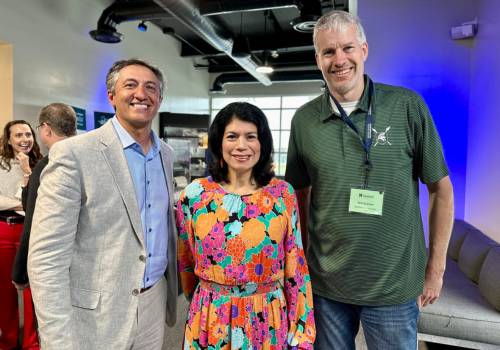Honing Houston's Quality of Life a Focus for Advisory Committee
Published Apr 11, 2019 by Julia McGowen
Somewhere between the triumph of Super Bowl LI, the harrowing aftermath of Hurricane Harvey, and the surge in the region’s innovation scene, Houston has begun to be recognized as a powerhouse player, particularly when it comes to quality of life attributes. All eyes seem to be on Houston, and the city is showing the world it has what it takes to compete on the global stage.
Named one of Travel + Leisure’s Best Places to Travel in 2019, Houston has also been climbing the list of cities that both individuals and businesses eye when searching for a place to call home. Last year alone, the Greater Houston Partnership and its allies assisted in bringing more than 20 different projects to the region that collectively generated more than 11,000 jobs and $2.8 billion in investment.
Quality of life is paramount to attracting the best and brightest talent to the region and maintaining Houston’s status as the most diverse city in the nation. As part of the Partnership’s work to advance Houston as a great global city, the Quality of Place Advisory Committee convenes business leaders to support advancements in local aesthetics, green spaces and public-private partnerships that benefit all Houstonians.
During the Committee’s April 9 meeting, a presentation by Development Counsellors International’s (DCI) Vice President, Kat Saunders, offered a national perspective on how Houston stacks up against its competitors also vying to attract talent and businesses.
Citing Houston’s cost of living, thriving urban core and recent investment in public places, Saunders laid out how Houston is doing all the right things in marketing the city to the world, stating, “investment in cities attracts a workforce, and successful investment in place drives density within cities.”
The revitalization of Discovery Green and Buffalo Bayou Park are prime examples of how successful investment in public spaces drives economic development in the surrounding areas, adding to the value of place and community.
Currently, two of the city's most visited parks, Hermann Park and Memorial Park, are undergoing major, multi-million-dollar upgrades that will take several years to complete. Meanwhile in Houston's East End, work has begun to transform a former golf course into the Houston Botanic Garden. The first phase of that ambitious project is slated to open in 2020.
With many transformative public and green space improvement projects in the works and underway, Houston is taking quality of place seriously, a valuable asset as the city continues its work in attracting the biggest and brightest talent.
Learn more about the Quality of Place Committee here.
 The Houston Report
The Houston Report




















